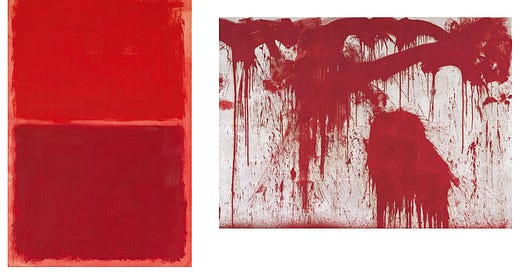If you’re reading this, please consider subscribing to Away from the Flock. We’re an independent publication focusing on great pieces of literature, art, film and questions that are not commonly addressed on the mainstream media. Your support will mean everything.
Anyways, here’s what you came here for….
Art has been portrayed for some time as something completely away from the audience, distant both intellectually and socially, edging absurd scenarios with exorbitant price-points and an exhausted theme of questioning the stablished idea of art. A theme initiated by Duchamp and followed by many others, resulting in the migration from museums into private galleries. Creating a world where prices rule over ideas, headlines over fine-print and social media posts over reflection. But art (just like society) is going through a transformation era, it cannot go back to what it was and it cannot continue being what it is today. In this context, I want to talk about two artists that have caused an entire array of emotions and which might seem very different in relation to each other and even “plastic” or “fake” but in reality they explore two historical and philosophically relevant perspectives of the same subject…..the experience of being human.
I’m here to construct a bridge between these two artists who, in my opinion, share similar reasons of reluctance from the audience. A reluctance rooted in the many pieces of plastic and utterly absurd art. I’m here to say, this is different to that, this is relevant, this aren’t just splashes of paint in a canvas and here’s why you should care about it (at least to the level of my understanding).
Rothko, Untitled (red on red), 1969.—————————Nitsch, Splatter Painting, 1986.
When we think about Rothko (left), we think of his iconic explorations of color and the absence of a defined form (other than subtle rectangles). We may think of the high selling price points, about the tons of people that’ve cried in front of one in galleries and museums across the world or we might even think (with all intent of cliché) “I can do that”. But we might not have sat down to have a private moment with one of these paintings or have thought of the layers upon layers of thought and paint that have gone into making them. Rothko’s are an invitation to have a conversation, not with the form or with the people or scenes that were very popular portraits during the impressionist period, but with the self. It’s quite like meditation, there is nothing here other than color and its profound strokes resonate with the profound emotions they elude to. We are the ones making the connections from color, to emotions, to memory, so the work brings a complete different experience for each one of us. Of course directly connecting specific colors to specific emotions would be quite simplistic. But the main idea remains, that is, Rothko conveys pure emotion detached from worldly elements that creates a platform where you can explore your own psychology, and it transmits the essential elements of what it is to be feeling something.
On the other hand we have Nitsch (right), to be honest with you I can barely look at one of his performances. Not because they are bad, but because I’m reminded of my own mortality. I’m reminded of my own human nature, it’s visceral, it’s raw, it’s the most elemental experience of existing, one that we share with other animals. We’re passing through this world as walking bags of blood, able to experience more complex scenarios but all of them attached and rooted essentially from our animal self. There is a violence to this artwork, just as there is a violence to the very act of existing. Nitsch establishes a connection with the primitive parts of our nature, a nature we’ve dedicated time and effort to hide but that serves as the very foundation of being. And there are, of course, comments about the decisions over the form (similar to those of Rothko) and is one of the reasons these paintings are overlooked by many. But I think they are missing out on something which, while it isn’t super easy to enjoy, it unmistakably makes you feel something rooted in that primitive idea of existing and it’s worth it being repulsed by.
The art is within, that’s a topic of similarity among both artists. While Rothko appeals to the inner parts of psychological and social human experience, Nitsch appeals to your primitive senses of existence rooted in the literal inner parts of your self (like blood and stuff). But they both can agree that art happens within you, and you have the potential of exploring these two sides of your human experience and reflect upon them. They are just catalyzers, a facilitator of the conversation that occurs when you stare at a Rothko or the almost immediate repulse you feel when you look at the crime scene Nitsch procures. If you think about it, the response you get from these paintings is part of the act, one is more meditative and requires more layers of thinking, while the other is almost immediate and it requires an instinct response. You can even see it in the way they either carefully procured or carelessly splattered paint across the canvas, and the true beauty behind all of this is that you can connect to both idead through your singular yet universal experience of being human.
Thank you for your time
-Roberto P.





"There is a violence to this artwork, just as there is a violence to the very act of existing" WOW, I truly loved it.